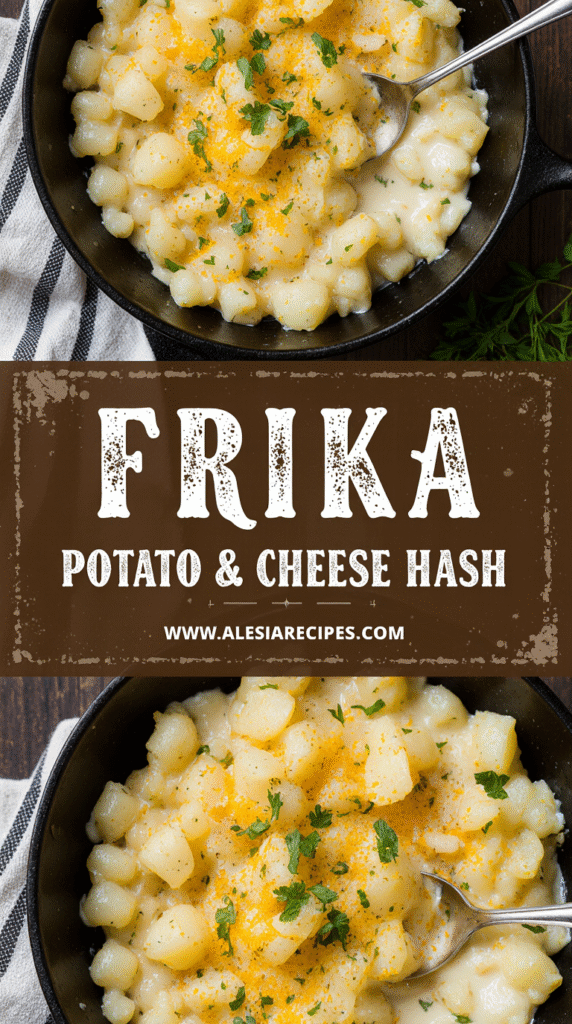How to Make Authentic Frika: A Foolproof Potato & Cheese Hash Guide
Frika originally emerged during World War I when monks and priests, faced with limited food options, ingeniously combined potatoes and cheese to create this hearty dish. This traditional Slovenian potato and cheese hash is also enjoyed across the border in parts of Friuli, Italy, making it a truly regional delight.
What makes this dish special? For an authentic frika, you’ll need 300g of potatoes, 40g of pork fat, and a combination of immature and mature hard cheeses – traditionally Tolminc aged for 60 days and 6 months respectively. Additionally, a 40g mixture of herbs including tarragon, chive, dill, oregano, and lovage adds wonderful depth of flavor. Taking between 45-60 minutes from start to finish, this wonderfully comforting dish truly warms your soul.
In this guide, we’ll walk you through our foolproof method for creating authentic frika at home. Whether you’re exploring frika recipes for the first time or looking to perfect your technique, we’ve got you covered with everything from preparation to serving suggestions.
Getting Started with Frika
Traditionally hailing from the Slovenian Alps, frika represents the perfect blend of rustic comfort and culinary simplicity. Essentially a pan-fried potato and cheese hash, this dish boasts a crispy exterior with a tender, cheesy interior that makes it irresistible.
To create authentic frika, you’ll need these fundamental ingredients:
- Potatoes – 400g (1 pound), peeled and grated
- Cheese – Two varieties work best: 160g semi-hard cheese and 50g hard cheese, traditionally Tolminc
- Fat – 50g pancetta cubed (or substitute with olive oil/lard)
- Herbs – 2 tablespoons fresh herbs such as parsley, oregano, and lovage [44]
Historically, frika held special significance for those performing heavy physical labor. Given its high caloric value and relatively expensive ingredients, particularly the cheese, this dish was primarily consumed during hay harvest or forest work. Furthermore, shepherds in high mountain pastures regularly enjoyed frika during grazing season.
Interestingly, no single traditional recipe exists for frika. Throughout the Soča Valley, different areas have left their mark on this versatile dish. While cheese remains the only mandatory ingredient, variations might include onions, leeks, eggs, bacon, salami, apples, or different herb combinations.
Before cooking, remember that your choice of cheese dramatically impacts the final flavor and texture. Fresh herbs bring necessary brightness that balances the richness of this delightful Alpine creation.
Step-by-Step: How to Make Authentic Frika
Creating authentic frika begins with proper potato preparation. First, peel and finely grate the potatoes, then place them in cold water. Rinse thoroughly 2-3 times until the water runs clear, removing excess starch that would otherwise prevent crispiness.
Next, prepare your cooking fat. Place 50g of diced pancetta into a 9-inch skillet over medium heat and cook until crisp, about 3-4 minutes. Alternatively, use 1 tablespoon of olive oil or lard for a vegetarian version.
Add the drained potatoes to the skillet, spreading them evenly. Cook for 15-18 minutes, stirring occasionally until tender. If the potatoes brown too quickly, simply add a tablespoon of water to maintain moisture without sacrificing crispiness.
Once potatoes are cooked, mix in half of your grated cheese and stir gently until it starts to melt and bind the mixture. Subsequently, add the remaining cheese and fresh herbs, stirring well to combine. Smooth the top with a spatula and cook undisturbed for 5 minutes to form a golden crust.
For the final touch, carefully slide the frika onto a plate, then invert it back into the skillet to cook the other side for an additional 5 minutes. This flipping technique ensures your frika develops that signature crispy exterior on both sides while maintaining a tender, cheese-filled interior.
Serving and Enhancing Your Frika
Once your golden, crispy frika is ready, proper serving elevates this traditional dish to new heights. Slice the frika into wedges and serve it warm, ideally right after cooking for the best texture and flavor.
Traditionally, frika is served on a wooden board or plate with a generous sprinkling of fresh herbs – parsley being a popular choice to add brightness and visual appeal. In authentic Slovenian settings, frika typically accompanies polenta (cornmeal mush) and seasonal vegetables that complement its rich flavors.
For a complete meal experience, consider these perfect pairings:
- A crisp green salad with lemon vinaigrette to balance the richness
- Simple seasonal salads that add necessary freshness
- Roasted vegetables or steamed greens for a nutritious combination
- A poached egg on top transforms frika into a heartier option
As for beverages, a glass of dry white wine or sparkling water with lemon harmonizes nicely with the savory notes.
Indeed, frika holds cultural significance beyond everyday meals – many Slovenian families serve it during special celebrations like birthdays, confirmations, and communions. True frika enthusiasts might even attend the traditional FrikaFest to celebrate this beloved dish alongside fellow admirers!
Conclusion
Frika stands as a testament to culinary innovation born from necessity during World War I. This remarkable potato and cheese hash represents more than just a meal; it embodies the resourcefulness and creativity of those who first created it. Throughout this guide, we’ve explored everything from its humble origins to the specific techniques required for that perfect crispy exterior and melty interior.
The beauty of frika undoubtedly lies in its versatility. While maintaining its core identity with potatoes and cheese, regional variations across Slovenia and parts of Italy demonstrate how adaptable this dish truly is. You can personalize your frika with different herb combinations or add ingredients like bacon, eggs, or even apples to create your own signature version.
Most importantly, the preparation method matters significantly. Proper potato rinsing removes excess starch, ensuring that crispy texture we all crave. The careful layering and flipping technique creates that distinctive golden crust on both sides. These seemingly small details actually transform simple ingredients into something extraordinary.
Beyond its delicious taste, frika connects us to Alpine traditions and the hearty meals that sustained generations of shepherds and laborers. The dish reminds us how food often carries cultural significance far beyond mere sustenance.
We hope this foolproof guide inspires you to bring this authentic Slovenian tradition into your kitchen. Whether served alongside polenta for a traditional meal or paired with a crisp salad for a modern twist, your homemade frika will certainly impress. The combination of golden-brown potatoes, melted cheese, and fragrant herbs creates a comfort food experience unlike any other.
Remember, patience during cooking yields the best results. Allow those potatoes to cook properly, give the cheese time to melt perfectly, and savor the process just as much as the final dish. Your kitchen will fill with irresistible aromas, and your efforts will reward you with an authentic taste of Slovenia’s culinary heritage.
FAQs
Q1. What is Frika and where does it originate from? Frika is a traditional potato and cheese hash that originated in Slovenia during World War I. It’s also enjoyed in parts of Friuli, Italy, making it a regional Alpine dish.
Q2. What are the main ingredients needed to make authentic Frika? The key ingredients for authentic Frika include potatoes, a combination of semi-hard and hard cheeses (traditionally Tolminc), pork fat or pancetta, and a mixture of fresh herbs such as parsley, oregano, and lovage.
Q3. How long does it take to prepare Frika? Preparing Frika typically takes between 45-60 minutes from start to finish, including the time for cooking and achieving the perfect crispy exterior.
Q4. What’s the secret to getting a crispy texture in Frika? The secret to a crispy Frika lies in properly rinsing the grated potatoes to remove excess starch, and using the right cooking technique. This includes cooking the potatoes until tender, then flipping the entire hash to crisp both sides evenly.
Q5. How is Frika traditionally served? Frika is traditionally served warm, sliced into wedges, and often presented on a wooden board or plate. It’s commonly accompanied by polenta and seasonal vegetables, and sometimes garnished with fresh herbs like parsley for added flavor and visual appeal.


